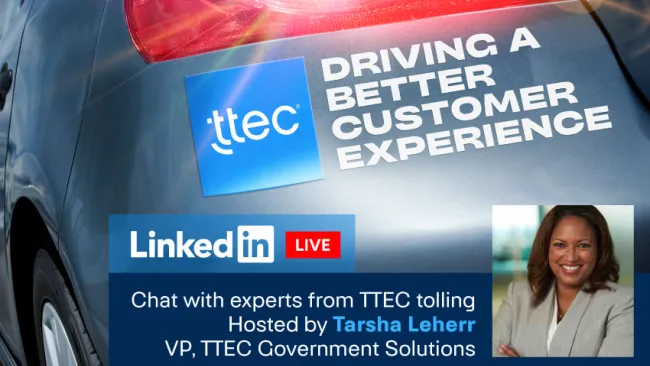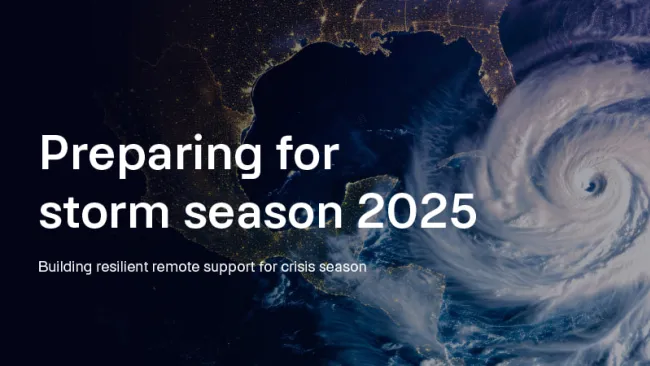Nearly a year into the pandemic that has upended life as we know it, some hope is on the horizon as COVID-19 vaccinations begin worldwide. While to many this represents the light at the end of a long tunnel, the vaccine rollout is one of the largest public health initiatives in history and brings with it immense logistical challenges.
Millions of doses have to be distributed on a massive scale, and patients will have to be tracked closely to ensure they receive second doses when necessary. At the same time, organizations face the additional challenge of scaling outreach efforts to reach and educate members of the public who are skeptical of the vaccine.
With the world eagerly awaiting an end to the pandemic, those tasked with distributing and administering vaccines will be under considerable stress. Challenges loom large - particularly, the expected surge in call volume - but customer experience (CX) best practices can help overcome some of the obstacles on the horizon.
Handling surging call volume
One of the biggest challenges of the vaccine rollout will be the huge surge in call volume. Members of the public have many questions about the vaccine, and many of them will seek answers through contact centers. How centers manage this surge will significantly impact the rollout’s effectiveness.
There are several ways organizations can facilitate the process and offer positive customer experiences during this unprecedented undertaking:
An omnichannel, cloud-based CX infrastructure can enable and integrate digital tools such as automated self-service, AI, text messaging and live chat to deflect calls and scale as needed. But the biggest influx will be in voice calls, which is still a primary initial interaction channel - especially for complex or emotionally charged conversations.
To ensure a positive patient experience, build a network of digitally enabled, remote contact center staff and give them the technology and tools they need to spring into action to support the vaccine rollout as needed.
Identifying contact center blind spots will be essential. Conduct an operational assessment to identify people, process, training, and technology gaps. Pharmacies, for example, need to determine which channels are likely to need more support during the surge, what type of support, and whether the organization has the technology and tools for seasonal associates to provide additional support during the initial stages and beyond.
Creating a step-by-step game plan will help. This will align all necessary resources so that when a swell occurs, organizations can execute faster. The plan should be customized for each organization’s needs but, in general, should include plans for activating contingent contact centers or labor forces as well as ensuring associates have access to the right information and resources to provide consistent and reliable support.
When training associates, empathy is a vital skill that will help them anticipate and understand patient needs, especially for a hot-button issue like vaccines. Invest the time to train associates on empathy and provide a strong knowledge base; this will position them to deliver superior patient support during distribution.
Personal interactions will be an important part of the process, and a mix of human touch and digital technology will provide the optimal balance of positive patient experience and streamlined operations. Real-time insights from voice analytics, for instance, can help associates focus on what matters to the patient; and AI-powered training scenarios can enable associates to quickly practice and hone their skills at their convenience.
As the vaccine rollout unfolds, flexible scheduling also will be important to ensuring a positive experience. The more flexibility an organization has in ramping up or down quickly increases its ability to meet service levels and deliver an excellent patient experience.
Building public trust
Concerns about the safety, efficacy, and speed of vaccine development have left many people skeptical about the safety of COVID-19 immunizations. Proactively explaining vaccine efficacy and safety, along with giving clear instructions about how to receive the vaccine and how much it will cost, will be critical.
CX can play an important role in this. Well-trained, experienced contact center associates, who have a mix of industry knowledge and empathetic soft skills, can provide information from a real-time knowledge base while also offering a personal connection.
Scheduling appointments on a large scale
Scheduling vaccine appointments is a big logistical undertaking. Demand-based, organized, assembly line-like scheduling will be necessary - without it, there could be long lines, unsafe vaccination conditions, and inaccurate supply allocations. Real-time information and speed will be key to this important part of the patient journey.
The best CX approach to take on this challenge is a mix of SMS text messaging and voice. This will allow for automated self-service, backed by real people, that can reach diverse populations and demographics in the channels they prefer. Automated push alerts and outbound calls can encourage higher engagement. Underneath, API connectors can integrate and sync centralized scheduling systems, CRM, database layers, and other data components needed for a smooth scheduling program.
Enabling proactive outreach
Outreach will be key to various aspects of the vaccine rollout. The Center for Medicare and Medicaid Services (CMS) encourages health insurers to help their enrollees, providers, and the larger community understand the importance of vaccination. Beyond building awareness, proactive outreach is necessary for logistical tasks such as appointment setting, second dose planning, and post-inoculation follow-up.
From a CX perspective, digital tools like asynchronous messaging can provide information and communication directly on Facebook Messenger, Apple Business Chat, WhatsApp, or direct SMS messaging. These are channels people are already using, so they will be more likely to receive and pay attention to the conversation.
Managing data and security
There are many players involved in the vaccine rollout – the federal government, state and local public health departments, physicians and hospitals, pharmaceutical companies, payers, and academics – and together they must coordinate and collaborate on the rollout, which includes a lot of data management and sharing.
CX strategies can help. Deploy robotic process automation (RPA) bots to reduce errors and maintain compliance standards in the back office. Be transparent about how your agency collects, uses, and keeps data safe and secure; and use CX tools to be proactive with the public about potential fraudsters and scammers preying on the vulnerable public with fake requests for information.
The COVID-19 vaccination rollout presents challenges unlike any the public health sector has ever seen. But these challenges, while significant, are surmountable, and CX strategies can help ensure the rollout is not only successful but offers a positive patient experience as well.
















